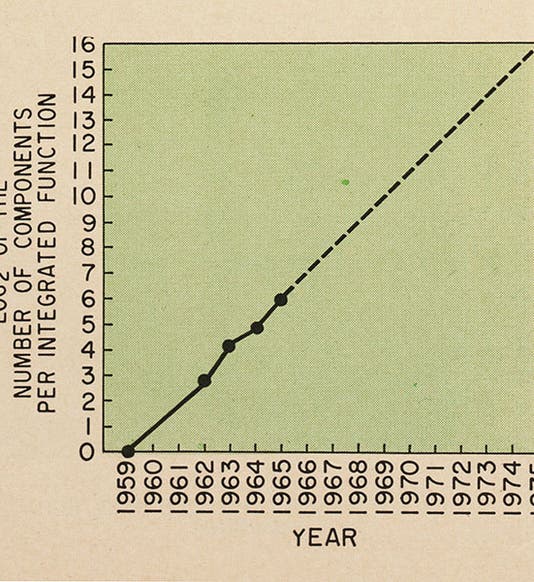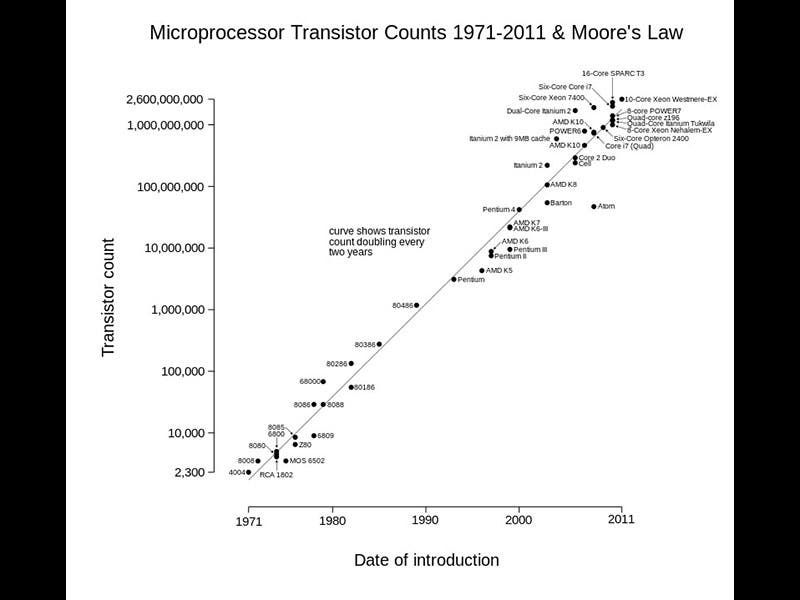Scientist of the Day - Gordon Moore
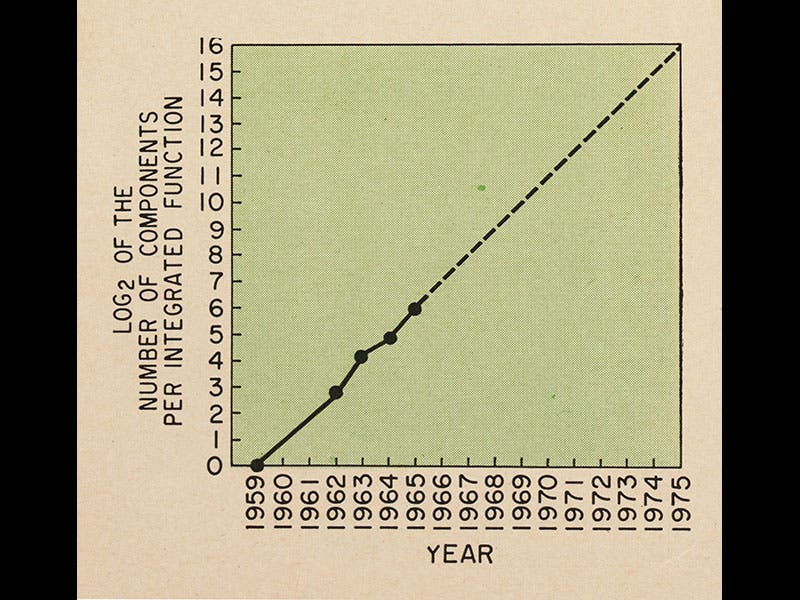
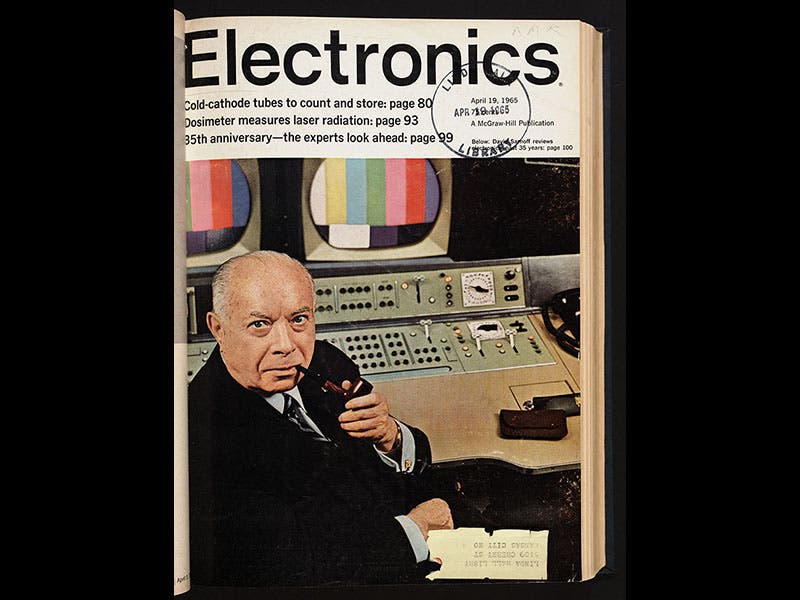
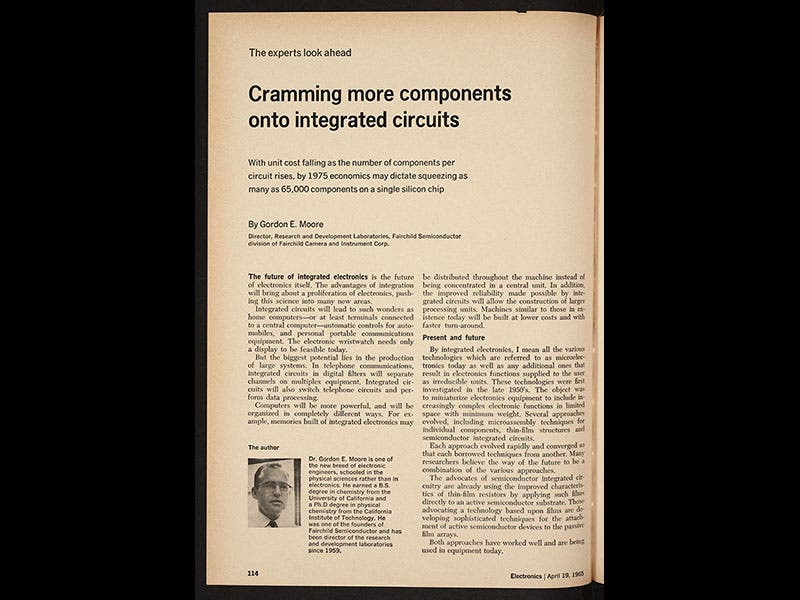
On April 19, 1965, the latest issue of Electronics magazine went on sale (second image). It contained a short 4-page article by Gordon Earle Moore, called "Cramming more components onto integrated circuits", in which Moore predicted that integrated circuits of the future would have more and more transistors packed onto their surfaces, at such a rate that the transistor number per unit area would double every year (third image). Moore even provided a graph showing past trends (solid line) and future predictions (first image). The trend held true for ten years, but in 1975 Moore revised his prediction to a doubling every two years instead of one.
Since 1975, that revised prediction has, amazingly, been borne out, as we see in a graph that shows transistor count per unit area from 1975 to 2011 (fourth image). At some point the predicted trend became known as Moore' Law, although of course it is not a law in the conventional sense. It has been often observed in recent years that Moore's law has now run its course, and that integrated circuit technology development is slowing down. But many have also observed that the demise of Moore's Law has been announced at least four times before, and yet transistor growth still has managed to keep pace with Moore's predictions. At some point, Moore’s Law will probably begin to lose its predictive value. But right now, an obituary would seem decidedly premature.
Moore, by the way, not only made predicted his law, he helped make it happen, as he and Robert Noyce, who developed some of the first integrated circuits (Noyce is on the right in the photo above, with Moore on the left) co-founded Intel Corporation in 1968.
Copies of the April 19 issue of Electronics are very scarce and highly collectible. We keep our copy in the rare book vault, along with Einstein's paper on relativity and Watson and Crick’s article on the structure of DNA.
Dr. William B. Ashworth, Jr., Consultant for the History of Science, Linda Hall Library and Associate Professor, Department of History, University of Missouri-Kansas City. Comments or corrections are welcome; please direct to ashworthw@umkc.edu.

